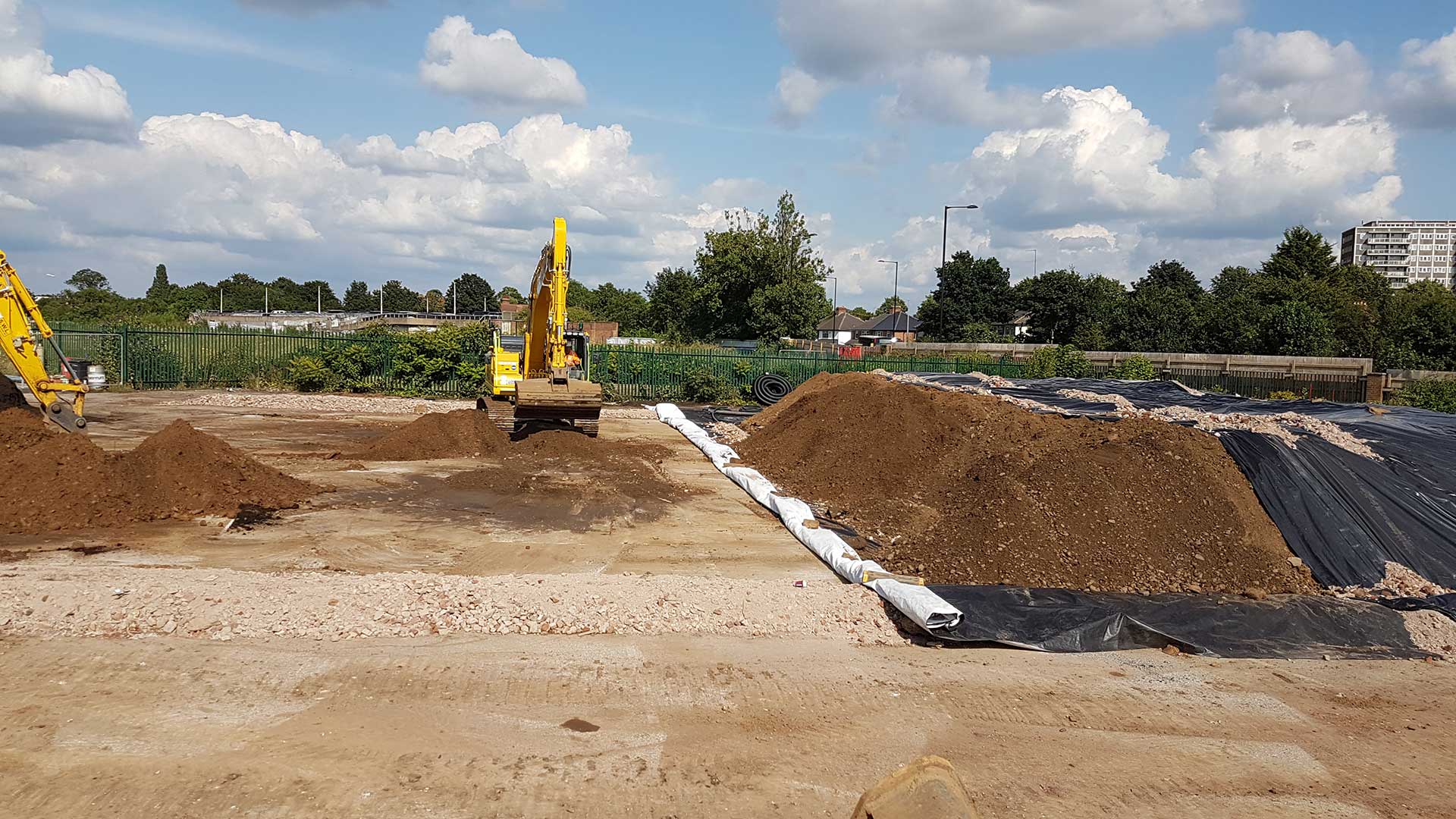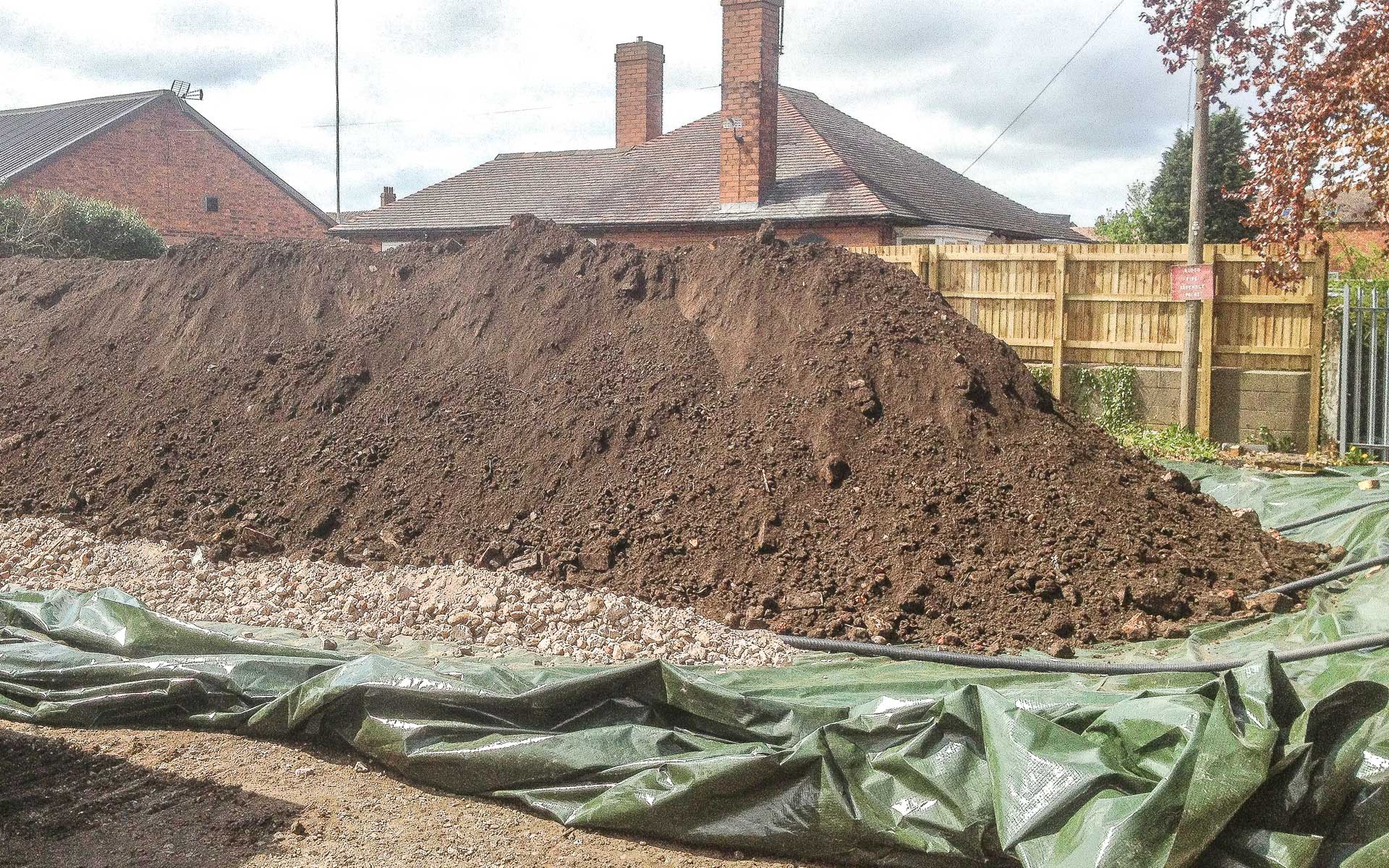BIOREMEDIATION
Ash Remediation Management offer proven bioremediation methods and technologies for the treatment of contaminated soils and sediments, both on and off site. Bioremediation focuses on organic based contaminants including hydrocarbons, polycyclic aromatic hydrocarbons, petroleum, diesel, BTEX and semi volatile organic compounds. Treatment methodologies of varying complexity are available and the system used is based upon the contaminant, timescales and budget.
Dependent upon the individual contaminants and site conditions, biological treatment or bioremediation can be applied via aerated biopiles, windrows or land farming. These bioremediation systems allow control of various parameters e.g. temperature, moisture and oxygen within the soils, which optimises conditions for the rapid population growth of indigenous and introduced ‘foreign’ micro-organisms. The end result of this is the ability to control and manipulate the bioremediation system to achieve the fastest and most economical contaminant breakdown.
Ex-situ bioremediation requires the excavated contaminated soils to be placed within a bunded treatment area which is lined in order to prevent cross contamination with the underlying ground. The three main bioremediation treatment methods previously stated are further explained below:
AERATED BIOPILES
Contaminated soils requiring treatment are placed in a lined and bunded treatment area. The pile is constructed to a height of approximately two and a half meters with the width and length tailored to suit the quantity of soil undergoing treatment and any space constraints on site.
The treatment bed is lined with aeration pipes which are spaced along its length and soil is mixed with nutrients (if required) and loaded directly onto it. The biopile is covered and air can be blown or extracted from pore spaces within the soil via the aeration system.
The positive or negative pressure required to aerate the biopile is supplied via a pump or blower which is contained within a small portable, soundproofed plant housing. Any volatile gases removed during the extraction phase are collected via an activated carbon or bio filter.
A further benefit of the aeration method is an additional temperature control mechanism which functions by altering the volume and rate at which air is pulled or pushed through the biopile.
WINDROWS
Bunded stockpiles measuring approximately two metres high and five metres wide are constructed from the excavated soils. The treatment process occurs when any required nutrient additives are mixed with the soils during the aeration phase. The aeration process is undertaken by windrow turning machinery which straddles the pile or excavator mounted processing equipment.
LAND FARMING
Excavated soils are placed in rows typically 400mm high in a bunded and lined area. These are systematically turned using basic earthmoving machinery and supplemented with any required nutrients, which optimises the bioremediation process. Land farming is one of the cheapest methods of bioremediation but it does require a large area for the works to be undertaken.
Bioremediation is suitable for a wide range of contaminants and is proven technology. Soil that is not immediately appropriate for bioremediation e.g. insufficient permeability, will require additional processing which can increase cost. Large areas are required and low ambient temperatures can slow the process down. A major benefit with the bioremediation process is that it avoids the costs of sending soils to landfill and purchasing clean fill if a deficit remains.
To compliment the specialist bioremediation works, Ash Remediation Management offer a full capability of general earthworks. Services include safe and controlled excavations as well as segregation and screening of materials to maximise reuse of site won materials.








